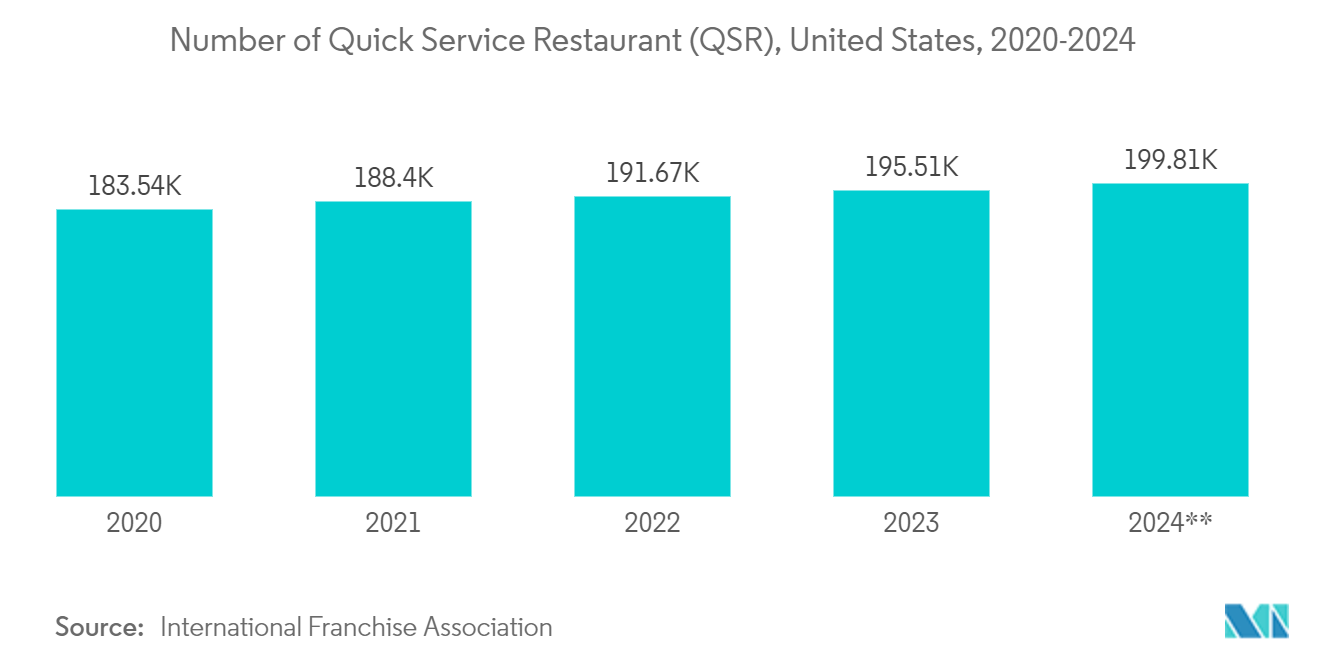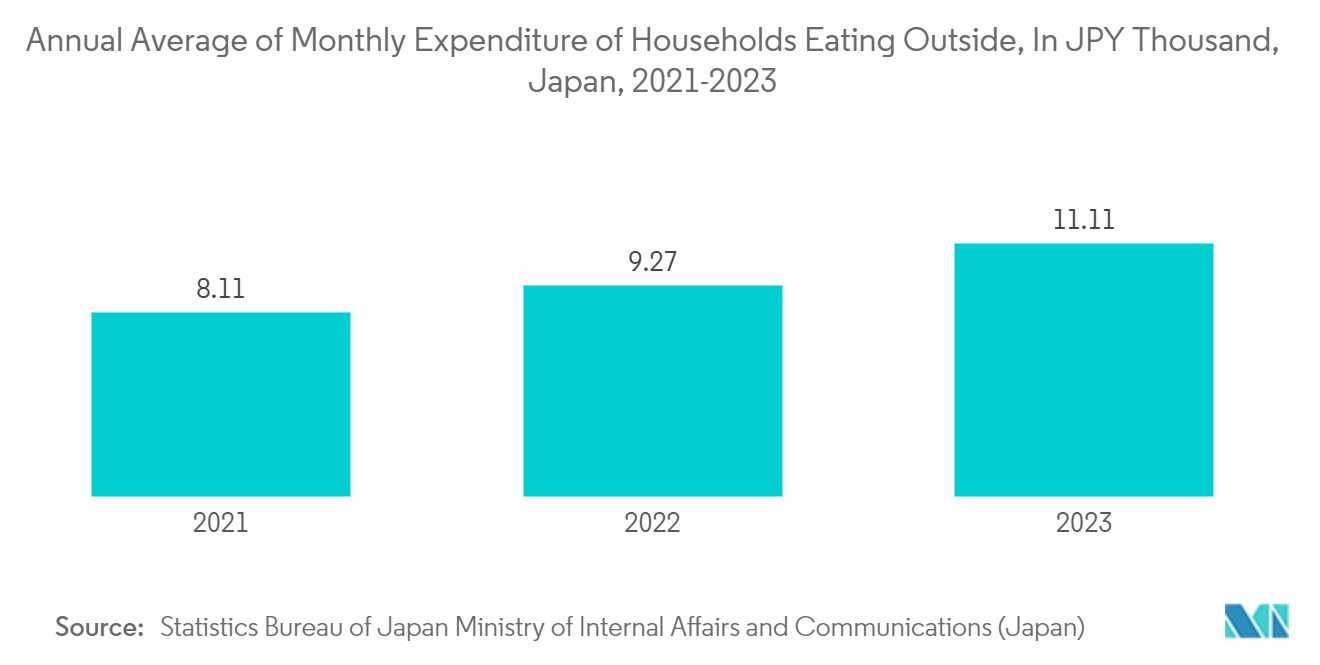Market Trends of Reusable Foodservice Packaging Industry
Growing Demand From Quick-service Restaurants (QSR) Aids the Market
- Quick-service restaurants (QSRs) offer low-cost food options, focusing on speed of service. Minimal table service and an emphasis on self-service distinguish this group from traditional restaurants. Food and beverages are paid for before consumption at QSRs. Over the last decade, the regional foodservice market, specifically for these countries, has witnessed the growth of several international QSR chains and home-grown brands offering varied cuisines suiting changing consumer preferences.
- With rising awareness of environmental sustainability, several major QSR chains are increasingly focusing on recyclability, compostability, and reusable packaging. Notable players, including Burger King, McDonald's, and Wendy's, have pledged to adopt reusable packaging.
- For instance, McDonald’s in France offers 21 reusable containers for dine-in customers. These include red plastic containers for fries, clear plastic beverage glasses, and white plastic cups designed for chicken nuggets.
- The franchise model will be crucial to the rise of QSR chains, which is expected to fuel market growth across the globe in the upcoming period. According to the data published by the International Franchise Association, in April 2024, after a slight downfall during the COVID-19 pandemic, the number of QSR in the United States rose steadily in the past few years from 183.54 thousand in 2020 to 195.51 thousand in 2023. Notably, as per the estimates, the number of QSRs across the country is expected to further improve during the forecast period.
- Further, increased spending on food, driven by a rising preference for on-the-go eating, has bolstered the demand for QSRs, fueling the need for reusable food service packaging. As per the Office for National Statistics (United Kingdom), consumer spending on restaurants and cafes in the United Kingdom skyrocketed in the post-pandemic period to GBP 132.89 billion (USD 169.50 billion). This bolstered spending is expected to consequently impact the market positively.
- Presently, millennials and Gen Z, in particular, actively seek out brands and places that resonate with their core values. Overall, QSRs can align with consumer demands for transparency and authenticity by actively showcasing their values. This can be achieved through initiatives like fundraisers and promotions, which feature sustainably sourced ingredients and recyclable and reusable packaging.

Asia-Pacific is Expected to Hold a Significant Market Share During the Forecast Period
- Asia-Pacific is home to densely populated and emerging economies such as China and India, and the demand for food services is surging. The market is propelled by a surge in demand for convenience, a pivot toward healthier dietary choices, and consequently, a notable uptick in adopting sustainable packaging is projected to peak during the forecast period. These trends transform the region into a technological innovation and business growth center.
- The region is witnessing a rapid surge in the demand for mobile food service stations. This uptick is primarily driven by escalating urbanization, increasingly busy lifestyles, and a heightened appetite for on-the-go dining.
- For instance, in June 2023, a Hong Kong student-led food service start-up introduced an eco-friendly rental service for reusable bowls. Eleven restaurants with 300 registered users have joined this innovative initiative. Such regional developments would bolster the awareness of reusable product packaging in the foodservice sector.
- The surge in plastic pollution in Asia-Pacific has prompted governments across the region to implement policies that aim to reduce plastic waste and promote sustainable packaging solutions. In 2022, the Government of India introduced a ban on single-use plastic in several sectors, including food service, thereby accelerating the demand for multiple-use packaging products across the country.
- Further, with the growing working population and busy lifestyles, consumer spending on eating outside is also increasing in countries like Japan, China, India, and Indonesia. For instance, according to the Ministry of Internal Affairs and Communications (Japan) and Statistics Bureau of Japan's report published in February 2024, the annual average household expenditure on dining out in Japan increased rapidly from JPY 8.11 thousand (USD 0.051 thousand) in 2021 to JPY 11.11 (USD 0.070 thousand) in just three years ending 2023.


